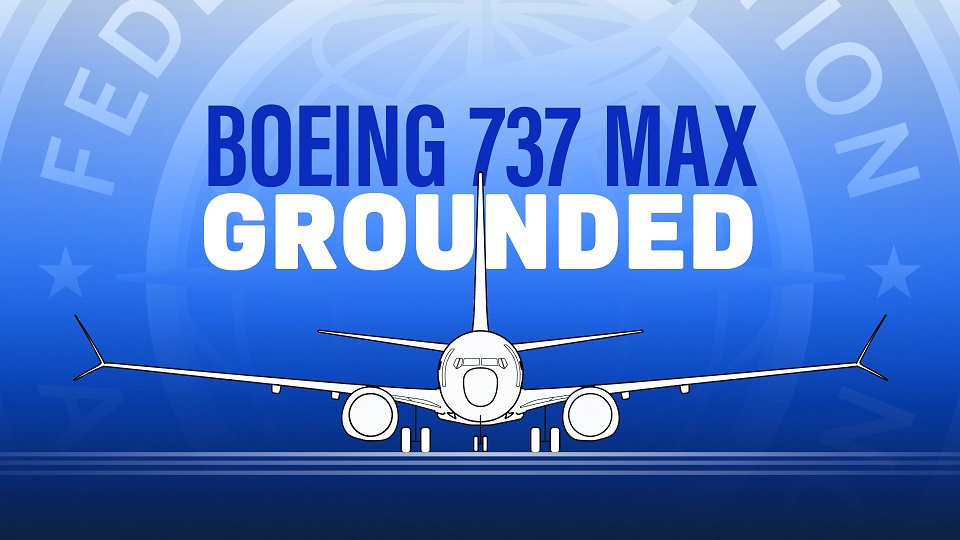Lobbies and Belated Groundings: Boeing’s 737 Max 8

Lobbies, powerful interests and financial matters are usually the first things that come to mind when the aircraft industry is considered. Safety, while deemed of foremost importance, is a superficial formality, sometimes observed in the breach. To see the camera footage of the wreckage from the Ethiopian Airlines Boeing 737 Max 8 was to be shocked by a certain irony: cameras was found lingering over an inflight safety cards on what to do in the event of an emergency. For those on board that doomed flight, it was irrelevant.
The deaths of all 157 individuals on board the flight en route to Nairobi from Addis Ababa on Sunday might have caused a flurry of panicked responses. There had been a similar disaster in Indonesia last year when Lion Air’s flight JT610 crashed killing 189 people. Two is too many, but the response to the disasters was initially lethargic.
Concern seemed to centre on the Manoeuvring Characteristics Augmentation System (MCAS), deemed vital to prevent the aircraft from stalling. Sensors within the MCAS might, according to accident investigator Geoffrey Dell, have sent “spurious signals to the flight management computers and resulting in the autopilot automatically pushing the nose of the aircraft down”. If so, then the ability to manually counter those actions, a safety design feature of previous aircraft autopilots, would have to be questioned. Troubling Dell was another question: why did the pilots fail to disconnect the autopilot when it played up? Ditto the auto throttle system itself.
When it comes to safety in the aviation industry, powerful players tend to monetise rather than humanise their passengers. A company like Boeing is seen as much as a patriot of the US defence industry as a producer of passenger aircraft. The company’s presence in Washington is multiple and vast, characterised by the buzzing activity of some two dozen in-house lobbyists and twenty lobbying firms. Lobbyists such as John Keast, a former principal at Cornerstone Government Affairs, have links with lawmakers such as Sen. Roger Wicker of Mississippi nurtured since the days he was chief of staff. Wicker spokeswoman Brianna Manzelli was, however, keen to narrow that influence supposedly wielded by Keast in a statement made to CNN. “While at Cornerstone Government Affairs, John Keast lobbied for a variety of clients including Boeing on defence issues only.”
Such combined lobbying efforts cost $15 million last year alone, which makes Boeing’s contribution relatively small to trade groups, but significant in terms of outdoing such competitors as Lockheed Martin. Added to the fact that CEO Dennis Muilenburg has an open channel to the White House, the campaign favouring the Max 8’s continued, and unmolested operation, was hitting gear. A Tuesday call made by the executive to Trump after the president’s tweet on the dangers posed by complex systems suggested some serious pull.
For a time, it seemed that the lobby was doing its customary black magic, and winning, attempting to douse fires being made by the likes of the Association of Flight Attendants-CWA Union calling for a temporary grounding of the Max 8. Certain pilots had noticed control issues while operating the Max 8 over US airspace.
Boeing initially convinced the Federal Aviation Administration, which failed to note in a surly statement from Acting FAA administrator Daniel K. Elwell any “systematic performance issues” worthy of grounding the model. “Nor have other civil aviation authorities provided data to us that would warrant action. In the course of our urgent review of data on the Ethiopian Airlines Flight 302 crash, if any issues affecting the continued airworthiness of the aircraft are identified, the FAA will take immediate and appropriate action.”
This statement stood in stark contrast to that of the Civil Aviation Authority of Thailand. “Currently, there is no clear indication for the actual cause of accidents in Indonesia & Ethiopia, and no evident risk management measures or any mechanism to ensure the safety of 737 Max 9 aircraft from the aircraft manufacturer.”
The lobby’s traction has gradually slowed on the Hill, and its tittering has, at least for the moment, started to lose conviction. Calls started to come from lawmakers that the 737 model needed to be looked at. Sen. Ted Cruz (R-Texas) suggested grounding the aircraft as a “prudent” measure. “Further investigation may reveal that mechanical issues were not the cause, but until that time, our first priority must be the safety of the flying public.” Democratic senators Edward Markey (D-MA) and Richard Blumenthal (D-CT) were also itching to convince the FAA to ground the Max 8 “until the agency can conclusively determine that the aircraft be operated safely.”
Other lawmakers, ever mindful of Boeing’s influence in their states, preferred to leave the regulators to their task. Till then, the planes would be permitted to continue taking to the skies. “Right now,” cautioned Rep. Rick Larsen (D-Wash.), chair of the subcommittee overseeing aviation and a political voice for a state hosting an important Boeing facility, “the important thing is that relevant agencies are allowed to conduct a thorough and careful investigation.”
It was President Donald Trump who ultimately decided to reverse the earlier decision by regulators permitting the aircraft to continue flying. The emergency order put the US in step with safety regulators in 42 other countries. “I didn’t want to take any chances,” explained Trump. But ever mindful of Boeing’s shadowy hold, the president added a qualifying note. “We could have delayed it. We maybe didn’t have to make it at all. But I felt it was important both psychologically and in a lot of other ways.”
The FAA’s continued “data gathering”, previously deemed insufficient to warrant a grounding despite the quick response in other countries, had led to the opposite conclusion. This included “newly refined satellite data available to the FAA”. But Elwell was unwilling to eat anything resembling humble pie. “Since this accident occurred we were resolute that we would not take action until we had data. That data coalesced today.” A coalescence demonstrating, in more concrete terms, how safety, while important, tends to lag in the broader considerations of profit and operation in the aviation industry.

Image from wktv.com
Like what we do at The AIMN?
You’ll like it even more knowing that your donation will help us to keep up the good fight.
Chuck in a few bucks and see just how far it goes!










5 comments
Login here Register here-
DrakeN
-
Jack Cade
-
David Bruce
-
Lambert Simpleton
-
Peter F
Return to home pageCommerce is KIng.
Traditionally, the aviation industry has always come down on the side of absolute minimum risk:
This “let them fly until we have more certainty of failure” seems to be a serious departure from the safety conciousness of the past.
It would appear from this most recent matter that risk to profit has become of greater importance than risk to the health and wellbeing of the clientele and others.
Very concerning indeed.
I heard an interview once, maybe 25 years ago, just when neoliberalism was coming into vogue. A US airline got a new CEO, who told his line managers to get rid of all employees over the age of 45, because they were too highly paid and easily replaced.
Two weeks later, a line manager burst into the CEOs office unannounced, and said ‘We have no aircraft maintenance people. They were all over 45 and you fired them.’
That was the beginning of people heading industries they knew nothing about and saw everything in dollar terms.
We have a government like that – a bunch of plonkers who have never had real jobs but know how to sack people and save money, while plundering the nation’s pockets.
Boeing still have not released details of the Boeing Honeywell Uninterruptible Auto Pilot fitted to the Boeing 777. The flight management systems on this model were written in the ADA computer language. I wonder who provides maintenance and enhancements to this software now?
The current executive and management teams at Boeing were previously running McDonnell Douglas, the famous makers of the DC10.
Both the Boeing 777 and the 737 Max 8 rely on multiple sensors which appear to be capable of accepting signals supplied externally. Both 737 Max 8 crashes were in line-of-sight from the ground.
There are so many unanswered questions from the latest crashes. Now I wonder why satellite data was never released for MH370 and MH17?
Then there were 20 anti- corruption audit staff from the Ministry of Finance in Indonesia on the Lion Air 737 Max 8. Apparently they were heading to the island to oversee a gold shipment? I wonder who the passengers of interest were on the latest crash?
They are in DS now.
Pennywise, pound foolish. I think a number of executives now see only a nightmarish grey at the core and substance of their futures, as a consequence of lazy oversight and unthought through responses to a real-world situation.
It is so similar at an underlying level to what happened the Catholic church and its inadequacy in response to its developing situation re
abuse of minors over some time, since the issue first began to develop.
An interesting piece in an SBS program on the 50 years of the Boeing747 was the fact that they knew there was a problem with the engines of the 747 when it was originally put into service: if they were left at full throttle for too long they overheated and were in danger of failure. When the first (non commercial) flight across the Atlantic took of to go to the Paris Air Show, a decision had to be made by the crew whether or not to continue when the engines overheated in the first eight minutes. They decided to continue, and made it to Paris. The prestige of appearing at the Paris Air Show was apparently worth the risk.
The 747 was apparently designed with safety features and backup equipment , in some cases quadrupled for when it eventually went into service.
An insight into Boeing’s ‘do or die’ approach, which has given us excellent aircraft, but exposed them to possible failure at times.